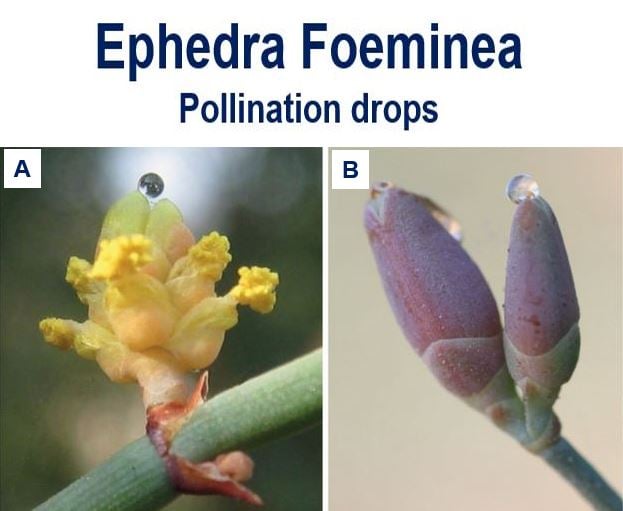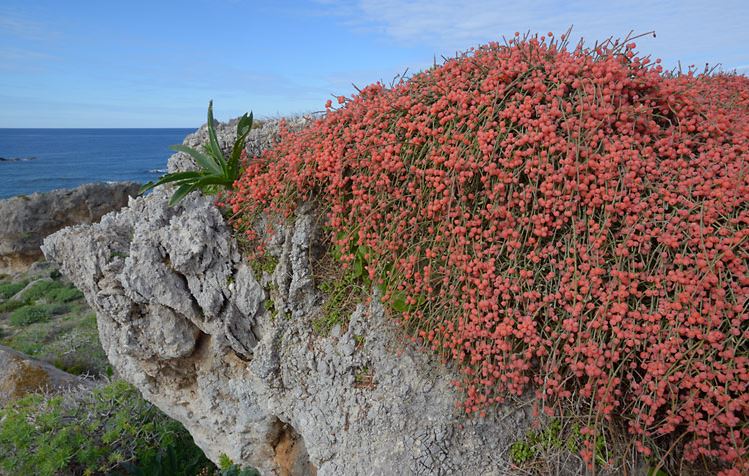Did you know there is a plant that only releases its pollen under the light of the full moon in July? It is called Ephedra foeminea, nicknamed the ‘Wereplant’ or ‘Werewolf Plant’, a scrambling shrub that could be one of the few remaining examples of how many plants used to pollinate.
Ephedra foeminea belongs to the group gymnosperms – seed-producing plants that include Ginkgo, conifers, cycads and Gnetales.
The majority of gymnosperms use wind for pollination, however some are insect pollinated as well. In the case of Ephedra (Gnetales), both insect and wind pollination occur.
However, not much is known about the evolution and mechanisms of pollinations in gymnosperms.

Ephedra foeminea: Male cone (A) and female cones (B) with pollination drops. The drops are sweet. (Image: Biology Letters)
Botanist Catarina Rydin and her doctoral student Kristina Bolinder, both from Stockholm University’s Department of Ecology, Environment and Plant Sciences, set out to determine how and when gymnosperms pollinate.
They published their findings in the academic journal Biology Letters (citation below).
They carried out field studies over four seasons and found an unexpected correlation between pollination and the phases of the full moon in one species.
Ephedra foeminea is pollinated by lepidopterans (moths and butterflies) and dipterans (flies), the majority of them nocturnal, under the light of the full moon of July.
The authors suggest this may occur for two possible reasons:
– several nocturnal insects navigate using the Moon,
– only under the light of a full moon can the pollination drops be properly seen by the flying insects.
The shrub is commonly found hanging from cliffs or clinging to olive trees in the eastern Mediterranean region. Its leaves are so small that some botanists refer to it as the ‘leafless Ephedra’.
However, when it is ready to reproduce, E. foeminiea, like a werewolf under a full moon, completely transforms – in this case into a fertile mass of bright yellor and red cones.

Ephedra foeminea clinging to a cliff. (Image: west-crete.com)
In the same geographical area, the researchers found that for wind-pollinated Ephedra distachya, pollination occurs at approximately the same dates each year, but it is not correlated to the full moon.
In an Abstract in the journal, the authors wrote:
“The lunar correlation has probably been lost in most species of Ephedra subsequent an evolutionary shift to wind pollination in the clade.”
“When the services of insects are no longer needed for successful pollination, the adaptive value of correlating pollination with the full moon is lost, and conceivably also the trait.”
Citation: “Moonlight pollination in the gymnosperm Ephedra (Gnetales),” Catarina Rydin and Kristina Bolinder. Biology Letters. Published 1 April, 2015. DOI: 10.1098/rsbl.2014.0993.
